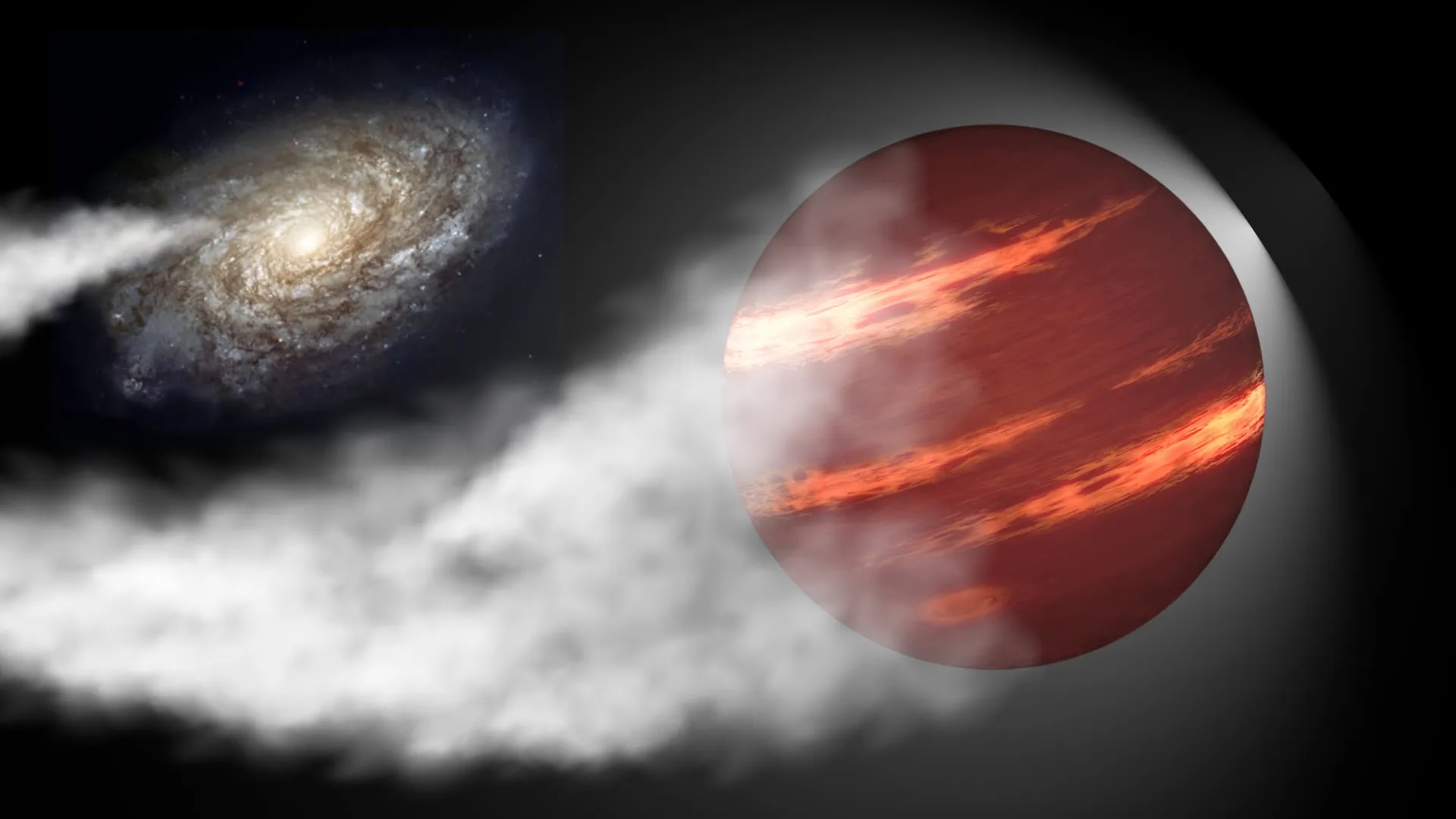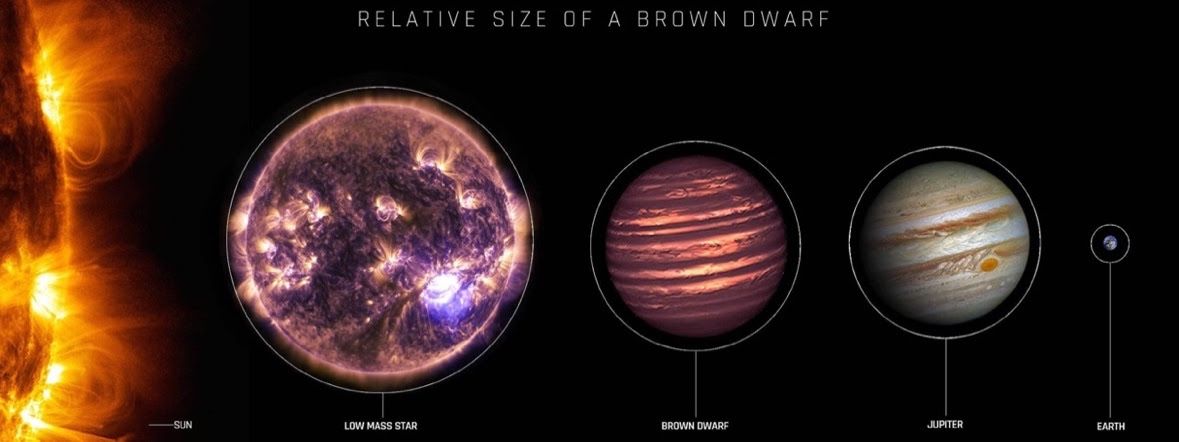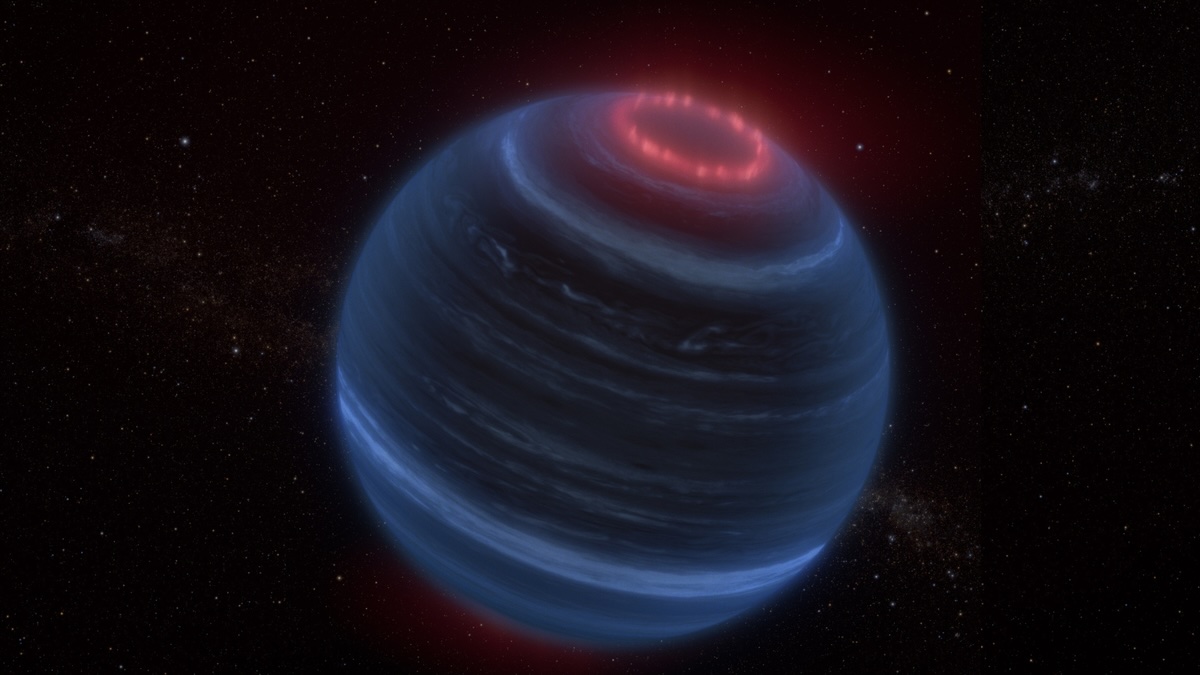Runaway 'failed star' races through the cosmos at 1.2 million mph
Citizen scientists have discovered what may be a brown dwarf racing through the cosmos at around 1.2 million miles per hour. Now astronomers want to know what launched it.

A newly discovered rogue stellar body may well be a "failed star," but it certainly isn't a failure when it comes to velocity!
The potential brown dwarf is racing through our Milky Way galaxy at 1.2 million mph (1.9 million kph). That's about 1,500 times faster than the speed of sound! Thankfully, this cosmic runaway is heading toward the center of the Milky Way and not toward us. However, the object is traveling so fast that it could eventually escape our galaxy entirely.
The incredible speed of this newly uncovered stellar body, designated CWISE J1249+3621, isn't the only fascinating thing about the object, which is currently around 400 light-years from Earth.
The stellar body has a mass that is just around 8% that of the sun, or 80 times the mass of Jupiter, which puts it right on the dividing line between a star and a fascinating group of objects called "brown dwarfs," often (somewhat unfairly) labeled "failed stars."
CWISE J1249+3621,was originally discovered by citizen scientists working with the Backyard Worlds: Planet 9 project, which uses data from NASA's Wide-field Infrared Survey Explorer (WISE) to detect faint, moving objects relatively close to the sun.
Related: Why do some stars fail to ignite?
After several citizen scientists flagged the object, a team of astronomers followed up using the Keck I Telescope, one of two 10-meter twin telescopes located on the dormant volcano Maunakea, in Hawai'i.
Get the world’s most fascinating discoveries delivered straight to your inbox.
"We discovered a very low-mass object, right on the star/brown dwarf mass boundary, that has an extreme velocity, moving fast enough that it may actually be unbound to the Milky Way galaxy," study team leader Adam Burgasser, of the University of California San Diego, told Space.com. "It joins a collection of 'hypervelocity' stars that have been found over the past few decades, most of which are thousands of light-years from the sun, whereas this source is a 'mere' 400 light-years away."
Burgasser added that the team's observations included an analysis of CWISE J1249+3621's atmosphere. This indicated that the potential brown dwarf also has an unusual chemical composition. The team aimed to use the information they gathered about the motion and composition of CWISE J1249+3621 to speculate on its possible origins.
"This discovery mainly opens up a new pathway to studying brown dwarfs that are in remote regions of the Milky Way, including its center, its halo and its various globular clusters and satellites," Burgasser said. "All of these systems are too far away to study brown dwarfs in detail directly, but if they get thrown at us, it's much easier!"
What is this rogue star running from?
Brown dwarfs form just like stars do — from giant clouds of gas and dust, called molecular clouds, that develop overly dense patches that collapse under the influence of their own gravity. However, unlike a regular star such as the sun, brown dwarfs fail to gather enough material from the remains of the cloud that birthed them to reach the mass needed to generate the pressures and temperatures in their cores that kickstart the fusion of hydrogen to helium. This is the process that defines a "main sequence" star. Hence, the "failed star" moniker foisted on brown dwarfs.
Brown dwarfs have masses ranging from around four times that of Jupiter to around 80 times that of the gas giant. (For comparison, the sun is 1,000 times more massive than Jupiter.) The mass of CWISE J1249+3621 is exciting because it puts it right at the hypothetical boundary between a star and a brown dwarf.
"The low mass is significant because it's by far the lowest-mass, high-velocity 'star' found to date. The original hypervelocity stars found about 20 years ago were massive O stars [around 50 times as massive as the sun] and B stars [up to 16 times as massive as the sun], a likely selection bias because these stars are rare and would need to be found at large distances," Burgasser said. "Our discovery indicates that whatever process (or processes) causes these stars to run away must operate at both high and low masses."
The UC San Diego researcher explained that the team is really excited to try to answer what sent this stellar body careening through the Milky Way.
"The star could have been kicked out of the center of Milky Way by our supermassive black hole, Sagittarius A*, a process commonly used to explain the origins of other hypervelocity stars," Burgasser said. "Notably, our star is moving into the center, not away, but it might be on a return trip after being ejected previously." He added that it is also possible that the brown dwarf is on the run from a "cosmic vampire." The rogue stellar body may have been part of a binary system with a white dwarf stellar corpse that was ripping material away from it. This gruesome feeding eventually causes the white dwarf to erupt in a cosmic explosion called a Type Ia supernova. This would destroy the white dwarf and provide the "kick" that sent this runaway racing through the Milky Way at incredible speeds.
"Another possibility is that the star was launched out of a globular cluster through dynamical interactions with black holes in the center of the cluster; recent simulations show that this should happen several times over the age of the Milky Way," Burgasser said. "Any of these processes above, given a fast enough kick, could have launched it out, or in the case of an 'extragalactic' star, it just happens to be passing through."
He added that, currently, the team can't rule out the possibility that this potential brown dwarf is an intruder in our galaxy that came from outside the Milky Way. But the fact that it's passing through the plane of our Milky Way makes that a less likely case.
"The orbit is certainly the most surprising aspect of this object; it is moving radially in and out of the center of the Milky Way and almost perfectly in the plane," Burgasser said. "Most of the high-velocity stars we see are on much more chaotic or inclined orbits. I think this is a real clue to its real origin."
Related: Hundreds of 'ghost stars' haunt the Milky Way's center. Scientists may finally know why.
Runaway brown dwarfs, if that is indeed what CWISE J1249+3621 is, appear to be rare, but this could be because of their cool and faint nature, which makes them difficult to detect. This means that the population of rogue brown dwarfs could be much larger than current detection rates indicate.
"These types of stars are exceedingly rare; only a few dozen have been found out of billions of stars examined, and, as noted, this is the first low-mass one. And this object in particular is difficult to see because it's a very cool and dim star, nearly 10,000 times fainter than the sun and emitting most of its light at infrared wavelengths," Burgasser said. "It's hard to say how common these bodies are, with only one found so far, but since this is so close, we speculate that there may be many more.
"That speculation is informed partly by the fact that the majority of stars in the Milky Way are low mass, and about one in five are brown dwarfs, and that these objects are the easiest to 'throw around' since they are so low mass."
The team now intends to follow up on the investigation of CWISE J1249+3621's atmosphere in greater detail to see if its chemical abundances reveal something about its origin. They will also attempt to discover more of these low-mass stellar runaways, a hunt in which citizen scientists will play an integral role.
"We definitely want to find more of these objects, and our citizen scientists have identified several more high-velocity candidates to follow up," Burgasser concluded. "Citizen scientists were absolutely essential to this study! They were the ones who identified this source as an interesting target worth investigating. Without them, we'd still have hundreds of thousands of faint little dots to sort through."
The team's research is discussed in a pre-peer-reviewed paper featured on the repository site arXiv.
Robert Lea is a science journalist in the U.K. who specializes in science, space, physics, astronomy, astrophysics, cosmology, quantum mechanics and technology. Rob's articles have been published in Physics World, New Scientist, Astronomy Magazine, All About Space and ZME Science. He also writes about science communication for Elsevier and the European Journal of Physics. Rob holds a bachelor of science degree in physics and astronomy from the U.K.’s Open University






